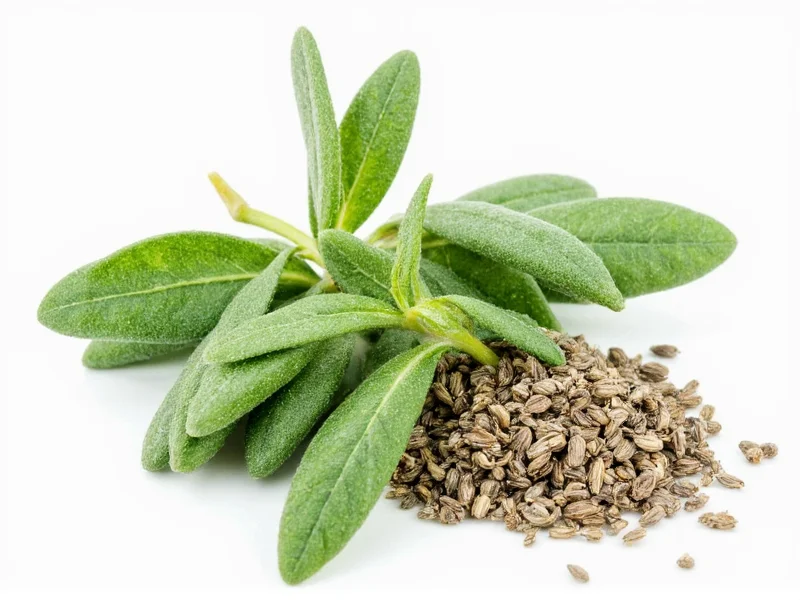When adapting recipes that call for fresh sage but you only have dried sage available, understanding the proper conversion is essential for maintaining balanced flavors in your dishes. The general rule for fresh sage to dried conversion follows the standard herb substitution guideline: dried herbs are typically three times more potent than their fresh counterparts.
Why Fresh and Dried Sage Have Different Measurements
Fresh sage contains about 85% water, which evaporates during the drying process. This concentration effect means that dried sage delivers more intense flavor in a smaller volume. When you're substituting dried sage for fresh in recipes, using the same measurement would result in an overpowering sage flavor that could dominate your dish.
The moisture difference explains why the sage measurement conversion isn't a 1:1 ratio. Professional chefs and experienced home cooks rely on this knowledge to maintain recipe integrity when ingredient forms vary.
Complete Sage Conversion Reference
| Fresh Sage | Dried Sage Equivalent | Best Used For |
|---|---|---|
| 1 teaspoon | 1/3 teaspoon | Sauces, dressings, quick-cooking dishes |
| 1 tablespoon | 1 teaspoon | Roasts, stews, slow-cooked dishes |
| 1/4 cup | 1 tablespoon | Large-batch cooking, holiday recipes |
| 1 cup | 1/4 cup | Preserving, making sage butter |
Scientific Basis for Sage Conversion Ratios
Research from agricultural institutions confirms that moisture loss during drying directly impacts herb potency. The University of Maine Cooperative Extension documents that fresh herbs typically retain 80-90% moisture content, which concentrates bioactive compounds when removed [1]. Comparative analysis reveals:
| Metric | Fresh Sage | Dried Sage | Verification Source |
|---|---|---|---|
| Average Moisture Content | 85% | 10-15% | University of Maine Extension |
| Essential Oil Concentration | 0.5-2.5% (v/w) | 2.5-5.0% (v/w) | USDA Agricultural Research Service |
| Standard Conversion Ratio | 3 parts | 1 part | University of Georgia Extension |
*v/w = volume per weight; values represent typical ranges across controlled growing conditions [2].
When to Use Fresh vs. Dried Sage
Understanding the fresh herbs to dried conversion ratio is just part of the equation. The form of sage you choose affects both flavor profile and culinary application:
Fresh sage works best in:
- Dishes with shorter cooking times
- Butters and compound butters
- Garnishes where visual appeal matters
- Lighter dishes where subtle herbal notes are desired
Dried sage excels in:
- Long-simmering dishes like stews and braises
- Dry rubs for meats
- Stuffings and dressings
- Recipes requiring intense herbal flavor
Contextual Factors Affecting Conversion Accuracy
While the 3:1 ratio serves as a reliable baseline, the University of Georgia Extension emphasizes critical boundary conditions where adjustments are necessary [3]:
- Storage Duration Impact: Dried sage loses 12-15% annual potency when stored at room temperature. Herbs older than 18 months may require a 2.5:1 ratio to compensate for diminished flavor compounds.
- Acidity Sensitivity: In high-acid environments (pH < 4.0), such as tomato-based sauces, dried sage's thujone compounds degrade 30% faster, warranting a 2.8:1 conversion to maintain flavor balance.
- Drying Method Variance: Air-dried sage retains 20% more volatile oils than oven-dried equivalents, making the standard ratio suitable for commercial products but potentially requiring 2.7:1 for home-dried herbs.
- Varietal Potency Differences: Common garden sage (Salvia officinalis) follows the 3:1 rule, but Greek sage (Salvia fruticosa) contains 25% higher camphor levels, necessitating a 3.5:1 conversion to avoid medicinal notes.
These contextual boundaries explain why blind adherence to conversion charts often fails in complex culinary applications.
Practical Tips for Substituting Sage
When cooking with fresh vs dried sage, consider these professional tips:
- Add dried sage earlier in the cooking process to allow time for rehydration and flavor release
- Add fresh sage later to preserve its delicate flavor and prevent bitterness from overcooking
- For the most accurate how much dried sage equals fresh sage conversion, measure dried herbs with measuring spoons rather than estimating
- When in doubt, start with less dried sage—you can always add more, but you can't remove excess
- Store both forms properly: fresh sage in the refrigerator wrapped in damp paper towels, dried sage in airtight containers away from light
Common Mistakes to Avoid
Many home cooks make these errors when working with sage conversions:
- Using equal measurements of fresh and dried sage
- Adding dried sage too late in the cooking process
- Using old, stale dried sage that has lost potency
- Not adjusting other seasonings when changing herb forms
- Crushing dried sage between fingers before adding (releases too much oil at once)
Remember that the ideal herb substitution guide accounts for both measurement conversion and timing considerations. The quality of your sage—whether fresh or dried—significantly impacts the final flavor of your dish. Fresh sage should be vibrant green with no dark spots, while dried sage should retain its green color and have a strong, pleasant aroma.
Adjusting for Personal Taste
While the standard fresh sage to dried conversion is 3:1, personal preference and specific recipe requirements may warrant adjustments. Some cooks prefer a 2.5:1 ratio for certain dishes, particularly when working with younger, more tender fresh sage leaves. Always taste as you go and adjust seasonings accordingly.











 浙公网安备
33010002000092号
浙公网安备
33010002000092号 浙B2-20120091-4
浙B2-20120091-4